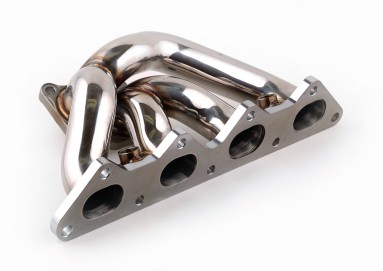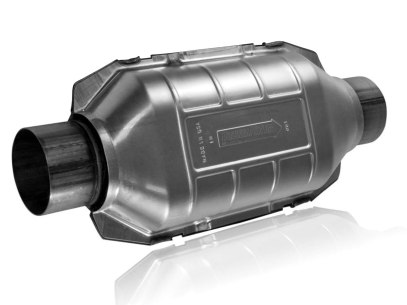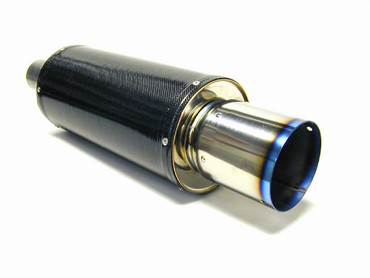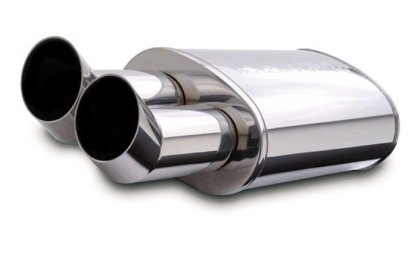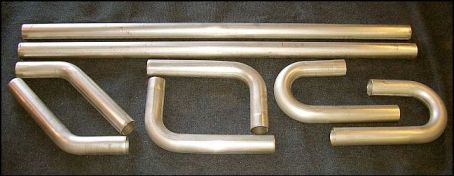Hello ladies and gentlemen,
Last week I have tried my best explaining how the intake system works. This week is going to be a continuation from last week and we’ll look at what comes after the intake system. Meaning what happens when the air coming from the intake is used and no longer needed.
Before starting to break down the parts, if you remember when I was explaining the engine, the air that goes into the cylinder chamber mixed with fuel does indeed come from the intake. Keep this in mind because that’s the entire reasoning behind the intake system. And everything I will be talking about today comes after the power stroke, when what used to be air turns into emission. So in simple words, the first part was the intake, the last part is exhaust and the in-between is the engine using the air and turning it into exhaust. And the exhaust system is what we’ll be looking at today.
Note: The entire model takes place starting from the engine and working its way back all the way to the rear-end of the car.
Exhaust manifold: The exhaust manifold is attached to the cylinder head and take the exhaust from all the cylinders and combines it in one pipe.
Oxygen Censor: All modern cars with fuel injector (which used to be carburetors in the old days) come with an oxygen sensor. It measures how much oxygen is left in the exhaust so that the computer can add or subtract fuel for maximal fuel efficiency. This sensor is mounted in the exhaust manifold or in the exhaust pipe.
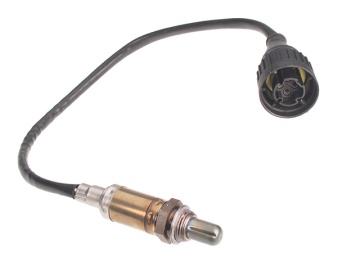
Source: http://www.autoexcellenceonline.com/smog-check-emissions.html
Catalytic Converter: This is a great tool that converts harmful carbon monoxide and hydrocarbons to water vapor and carbon dioxide. Some converts harmful nitrogen oxides. It’s mounted between the exhaust manifold and muffler.
Muffler: As the name suggests, the muffler quiets the system down to reasonable level. Most muffler baffle to bounce the exhaust around dissipating the energy and quitting the noise. The cool thing about muffler is they can come in different styles. typically trucks and larger suvs tend to have their muffler hidden underneath their car with the tip welded in a curved “L” shape. Where as regular cars usually have it to the right-hand side with the tip pointing outward. Some cars, mostly V-6 and sportier, use dual exhaust which means dual muffler at each side, but that’s not necessarily true for every application I have seen I4 (inline 4s) that use dual exhaust. And special editions of some cars, or just plain expensive, use quad exhaust tips which in my opinion are the most impressive looking if you care about styles. And again, this is the most general types of exhausts, Corvettes usually use all 4 exhaust aligned in the middle for example.
This is the current Mustang GT500 quad exhaust mufflers (can’t wait for the 2015 model!)
This is a regular muffler, not sure for what car it serves…
This is a regular muffler with two exhaust tips (again, not sure for what car but it seems like it’s for a truck or at least hidden down given the curve, again, I could be wrong).
Sources: http://www.ebay.com/bhp/shelby-gt500-mufflers
http://www.autoaccessoriesgarage.com/Exhaust/Mufflers
http://www.autoexcellenceonline.com/smog-check-emissions.html
Exhaust Pipe: Between all the parts mentioned above comes the exhaust pipe which carries the ga to the tail pipe. It’s usually made of steel or stainless steel sometimes (last longer due to corrosion resistance) or aluminum steel tubing. It’s a half way route between steel and stainless steel. It’s not as resistant as stainless steel but more resistant than steal, and less-costy than stainless steel. Personally, I would try to get stainless steel piping in general if I lie in snowy/rainy area, spending the extra money upfront can save you time and even more money to fixing it.
Source: http://truestreetcars.com/forums/parts-accessories/4959-exhaust-piping-systems-fittings.html
Note: I already mentioned corrosion or rust is an enemy to steel. Moisture, or water-vapor is present in the exhaust as a by-product of combustion and the catalytic converter. It can also come in form of rain. Shorter trips in your car can shorten the life of your exhaust system. When the car is shut off, all the water vapor in your car condenses and turns back into liquid. On a short trip, the water does not get hot enough and just stays in the system and rusts away the pipes. Consider stainless steel if that’s your situation. If you drive more than 15 miles at a time, then this shouldn’t be a problem. If your area uses salt during winter time, make sure to wash the bottom of your car every few weeks. Water and salt can speed up the process. The more often the better and make sure you run your engine to evaporate the water you used to wash it off.
As usual, if I have forgotten something that I should have added, please let me know below!
Sources:
http://www.tomiokaracing.com/index.php/exhaust-manifold-for-evo-4-9.html
http://www.autoexcellenceonline.com/smog-check-emissions.html
http://edscustommufflers.com/services/catalytic-converter/
http://www.ebay.com/bhp/shelby-gt500-mufflers
http://www.autoaccessoriesgarage.com/Exhaust/Mufflers
http://www.autoexcellenceonline.com/smog-check-emissions.html
http://truestreetcars.com/forums/parts-accessories/4959-exhaust-piping-systems-fittings.html
http://www.autorepairkey.com/2011/06/your-car-exhaust-system-explained/

